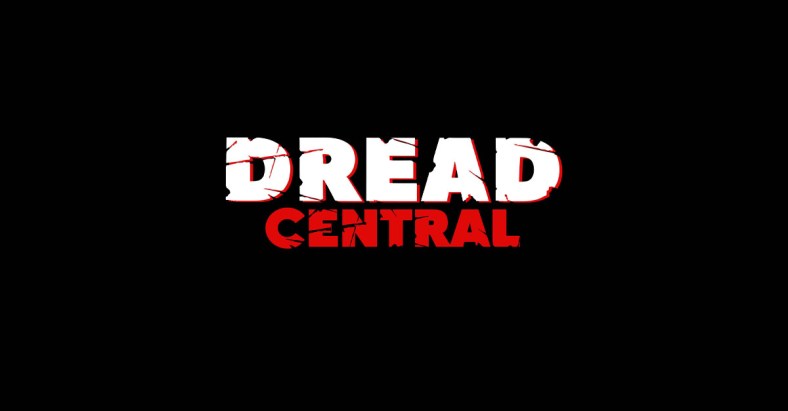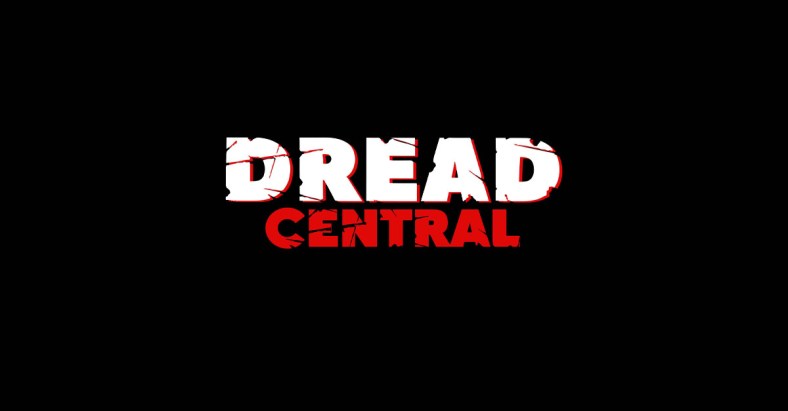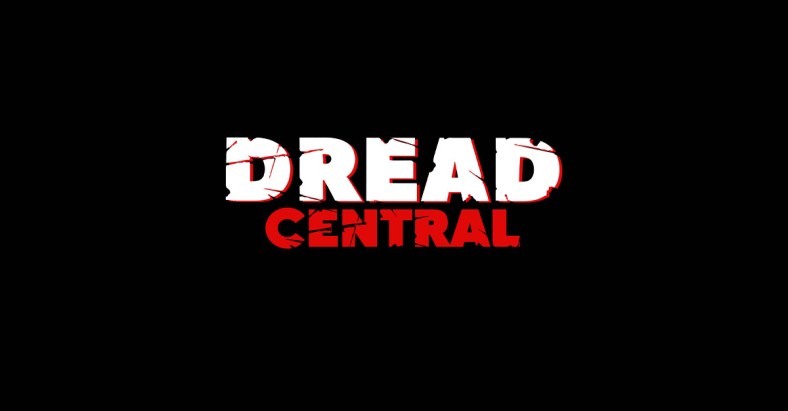Sitges 2016 Interview: Miguel Ángel Vivas Talks Inside

Remakes. Revamps. Rehashes. That’s virtually all we seem to be hearing of late, especially when it comes to horror. The latest to receive said remake treatment is Julien Maury and Alexandre Bustillo’s revered home invasion shocker Inside, although the helmer gallant enough to tackle a project doomed to allure hordes of haters well before the film even screened, Miguel Ángel Vivas (Extinction, Kidnapped), assured me that his take on the original is anything but a mere retread of the source material.
Under the production wings of Adrián Guerra and Nuria Valls at Spain’s Nostromo Pictures, Manu Diez ([REC]2) and Jaume Balagueró’s ([REC], Sleep Tight) script, coupled with Vivas’ direction, promises to take the original premise and convert it into “an edge-of-your-seat thriller” that’s much “more Hitchcockian than a splatter-fest.”
So, mere moments before Inside screened as this year’s curtain opener at the 2016 Sitges International Fantastic Film Festival, Dread Central caught up with Vivas to pick his brain as to what it was that ultimately convinced him to take on such a “delicate” remake, particularly when one of his absolute no-nos up until then had been to NEVER accept to direct a movie that had already been done…

DREAD CENTRAL: The script had actually been written six or seven years prior to the project actually going into production. When and why did the wheels finally start turning and how did the script end up in your lap?
Miguel Ángel Vivas: The whole thing actually came about right here in Sitges. I was having lunch with Jaume Balagueró and we were just casually chatting about this idea and script he had for Inside. Jaume told me that when he’d seen the original French film it had left him eager to create an alternate version that a wider audience would be more appreciative of. He thought the idea of having this pregnant woman trapped inside a house was a great premise but then [REC] 2 and Sleep Tight came along so he kind of left the Inside project to one side. Anyway, about a week after that chat at Sitges, the producer, Adrian Guerra, called me up to ask me if I thought the Inside project that we’d talked about sounded like a good idea. I asked him why he wanted to know and he said that they wanted me to direct it.
As soon as I heard that, my initial reaction was, “No way! Not a bloody chance.” I reacted like that at first mainly because it was a remake; and a remake of a film that I adore. One of my rules until then was to never direct a film that had already been done. A while back, I was actually offered to direct a remake of my own film, Kidnapped, in the U.S. and I just thought it would have been nonsensical. The producers tried convincing me about that one by saying that it wouldn’t be repeating the same as it would be in English etc, etc, etc. but I said that I’d already had my stab at my film and that a different director should helm that one so that it would be far removed from the original and it would be something that I’d be very interested in watching but not if it were me directing a film that I’d already done.
Getting back to Inside, a couple of days later I realised that I’d just done a film about fatherhood and I fancied doing something related to motherhood at that precise moment in my life. So I accepted the gig but I wanted to be sure that what we did wasn’t really just a remake of the original. Everyone asks me what I’ve changed or what I’ve improved or what’s worse. The truth is that I haven’t changed anything so to speak. There’s nothing about the original that needed improving so the only thing I was interested in was to make MY film. So the original definitely provided the building blocks for my “version,” but then there were things that I wanted to add that I came across in news stories and the like, so they were things that weren’t in the original but that I came across that I thought would fit right into the story and add some extra meat and a new perspective to the whole thing.
DREAD CENTRAL: So I’m guessing you got together with the writers, Balagueró and Diéz, to blend their original ideas with these ideas you wanted to implement to make this version of Inside as much your own “baby” as possible?
MAV: The first thing I was really interested in was how a woman suddenly becomes a mother – how that person changes when she becomes pregnant and adapts in preparation for this new chapter in her life. I wanted to emote this metamorphosis of a woman becoming a mother and I wanted to emote this as visually as possible. Instead of creating a straight-up horror movie, I wanted to create more of a thriller with all these highs and lows and I wanted each of the set pieces to play out as if they were the mother’s contractions; each one bigger than the previous one and creating very different emotions or experiences for the characters and also for the audience. Each set piece is actually shot in a completely different style to accentuate each of these “contractions.” You’ll see certain sequences with specific movements and lighting that’ll remind you of the silent movie era, but then you’ll see how we’ve tapped into more of a Hitchcockian approach and then others are more rooted in the likes of Carpenter, Raimi or De Palma. Don’t get me wrong; I never intended to simply replicate their styles, but what I wanted to create was something that never remained the same thoughout so that the audience never knows what to expect and to keep the film constantly fluctuating and intriguing. And I used this idea of various contractions to help the audience follow the protagonist’s journey to becoming a mother. We see this fear she has in becoming a mother but at the same time we see just how far she is willing to go to fight for her baby and to ultimately then become a mother – something that no one can ever really teach you because mothering is something that is essentially born out of instinct. Also, without spoiling anything, I added something towards the end that I wanted to use to highlight that who is really being born is the mother and that once her child is born, the mother will never be the same person that she was before that moment.
DREAD CENTRAL: I’m definitely sensing that you were more interested in tapping into the more tender side of motherhood compared to the original film. Is that why you and the co-writers wanted to create something targeted for a wider audience and also why the gore plays much more of a supporting role this time round?
MAV: From the word go, I saw this as much more of a commercial film. I’d already done Kidnapped where I had wanted to shock the audience by any means possible and I always try to refrain from repeating myself. I’d already done a really brutal film and I’d got that out of my system so I wanted to do something completely different. That’s exactly why I liked the idea of taking a film that was so brutal, like the original Inside, and turning it into something much more commercial and something that nobody would ever expect. I was excited by the challenge of creating those same levels of tension, fear and anguish without going down the easy route of just filling the frame with blood. I wanted to challenge myself to achieve all of the above just by using the camera, the emotions, the way each scene is staged. Just as an exercise and a challenge for me as a filmmaker made it more than worth taking on the project. But then, now having filmed Inside, I’m sure the next film I take on will be the hardest and toughest thing I’ve tackled so far. I’m working on a revenge film right now and what’s most important for me when it comes to taking on projects is that I need to understand exactly what it is that’s important to me to inject into each film I do – for the better or for the worse – but it needs to be exactly what it is that I’m interested in doing at each specific juncture in my life and career. All I ask of people when they go and see Inside is that they see it as a film in its own right and not as a remake because I intentionally didn’t want it to be a straight-up remake.
DREAD CENTRAL: Something you were adamant about was that the antagonist in the film had to be an older woman. Your lead, Rachel Nichols, told me how she had various actor friends that she thought would be perfect as the villian but who were all around the same age as her, but you wanted someone older.
MAV: That’s exactly right. For me, the villain had to have missed the train in terms of being able to have babies to make her role in the film all the more meaningful. It had to be Rachel’s baby and Rachel’s baby only.

DREAD CENTRAL: Given the very limited cast, choosing the two leads must have been a challenge and a half.
MAV: It’s just one of those cases where you come up with a list of about twenty people who you think would be interesting for the film. Your agents look at that list and there will only be about half of those that are free when you want to shoot. That list of ten is then sent to the actors’ agents and five of those ten agents like the project. But it doesn’t just depend on the agents of course. The actors have to be interested in the project too, so we ended up with about three actresses interested in coming on board. When it came to Rachel, I was really sure that we had exactly who we needed. She’s always proved herself when it comes to action but she’s also proved herself in roles as a victim, like she did in Aja’s P2, but then suddenly we saw her kicking ass in G.I. Joe. Putting all that aside though, I just really liked her acting style.
With Laura Harring it was a different story altogether. I’ve always been fascinated by her. I suddenly got a call telling me that another actress had read the script and was interested in playing the villain and her name was Laura Harring. My reaction was, “You’re kidding! This can’t be happening. You’re taking the piss here because you know how much Mulholland Drive means to me.” But it was anything but a wind-up and we set up a Skype video call. When we spoke to each other, I put on my serious face to talk about the project but my inner voice was jumping up and down shouting, “I’m talking to Laura Harring! Shout out, man! Tell her how much you love her!” I just couldn’t believe how lucky I was that she wanted to work on a project with me. I couldn’t have been happier.
DREAD CENTRAL: To wrap up, just minutes away from the Sitges premiere of Inside, a thousand hopes and fears must be going through your mind right now.
MAV: My biggest concern right now is that we’re in Sitges and you can’t even begin to imagine how much love I have for this festival. I was just chatting with the director of the festival, Ángel Sala, about my nerves and he said, “How can you be nervous today when you’re playing in front of a home crowd? You love this festival and this festival loves you!” And I told him that that’s precisely why I’m so concerned about people’s reactions. If it were any other festival it would still hurt if people didn’t react as well as hoped, but it’s not the end of the world. But here in Sitges, so many people that I love so much are here and I’ve been coming here for more than ten years on the trot so you can imagine just how much this means to me. But at the sime time, at the end of the day, the emotions and the happiness I get from being able to open this festival with our film makes everything worthwhile.
With further festival and theatrical release dates yet to be announced, we hope to be able to bring you that news as and when it rolls out. In the meanwhile, we’ll leave you with a couple of snapshots from this year’s Sitges festival.


Categorized:Editorials

